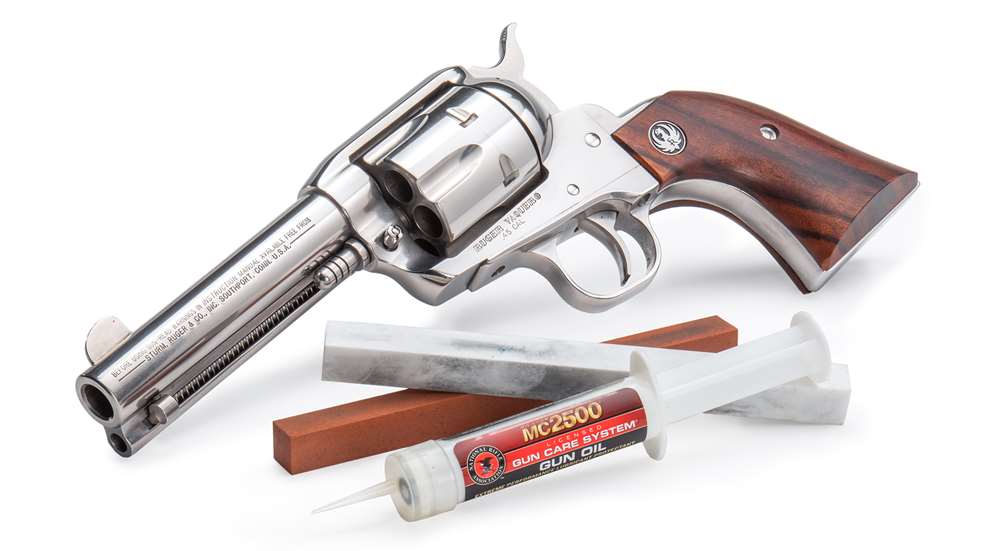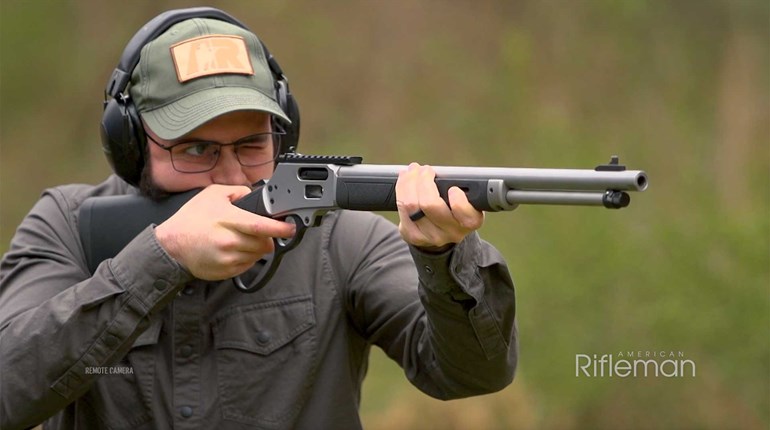
Recently, I made the acquisition of a previously owned Ruger Vaquero chambered in .45 Colt from a friend with the intention of making it my everyday carry gun in the field and on the farm. Unfortunately, I didn’t look it over as well as I should have, nor did I check the trigger before the deal was settled. Once I got the gun home, I checked the trigger on my trigger gauge, which maxed out at 12 pounds without releasing the hammer. It was at this point that I realized I should have been more careful with the purchase. After giving it some thought, I have decided to make the best of a bad deal and fix the gun so it will serve as intended. I would like a smooth trigger pull of about 4 pounds, and I would like some guidance on doing the work myself.
S.E. NelighAinsworth, NE
Sometimes lessons learned have a silver lining. Hopefully, we can make that the case with your Ruger revolver.
After making doubly sure the gun is unloaded, the first thing I would suggest is to detail disassemble the revolver and give it a good cleaning. An owner’s manual that gives instructions on how to do this is available on request from Ruger’s customer-service department. A great video showing the disassembly and reassembly of the Ruger single-action revolvers featuring my friend Bob Wood can be found on the Ruger website as well.
Once the gun is disassembled, remove any material present that isn’t a part of the gun. That includes firing residue, extraneous dirt that has migrated to the inside of the action, old solidified lubricant and anything that can be removed with solvent, a brush and cleaning patches. Odds are that your new purchase had never been cleaned and more importantly, lubricated by its previous owner. After the cleaning procedure has been completed, inspect each part for burrs, rough spots and any deformities that may have been causing friction that resulted in making the trigger pull heavier than normal. Defective or misshapen parts should be replaced or possibly reused if some light stoning would bring them back to serviceability. While the gun is apart, it might be beneficial to lightly stone the engagement surfaces of the sear portion of the trigger and the single-action notch on the hammer. Using a flat stone designed for triggers and sears, lightly stone the outside portion of the single-action notch on the hammer, reducing the depth of the notch and therefore reducing the engagement of the sear with the hammer. This reduction in depth will reduce the perceived movement of the trigger before the hammer is released. Be careful to maintain the factory angles to ensure proper hammer/sear engagement for safety and operational effectiveness.
After cleaning, inspection and cleaning up some of the contact surfaces, lubrication comes next.
Once you have identified all of the friction surfaces, a light application of a quality lubricant such as Mil-Comm’s TW-25B will maximize friction-reduction of all the moving parts of the revolver.
Another consideration is to order a spring kit to reduce the trigger-pull weight by changing the trigger return spring and the main spring to a balanced pair such as those offered by W.C. Wolf, which is without a doubt the foremost spring manufacturer in the firearm industry.
Since the revolver is already disassembled, replacing the springs would be a simple and easy process.
After reassembling the revolver, a function test should be performed to ensure proper operation and reliability. Testing for hammer push off to ensure that the hammer will stay cocked unless the trigger is pulled is especially important. It’s a simple and easy process to perform.
Thumb-cock the hammer to its full-cock position. Then place a thumb on the back of the hammer spur and apply moderate pressure to ensure the hammer can’t be pushed out of engagement with the sear.
After completing the tasks previously suggested, I can all but guarantee that you will have a trigger pull to your liking and certainly better than what you started out with. An added plus, the silver lining is having the intimate knowledge of your everyday carry piece and having the confidence in knowing it will work the way you want it to when you want it to.






































